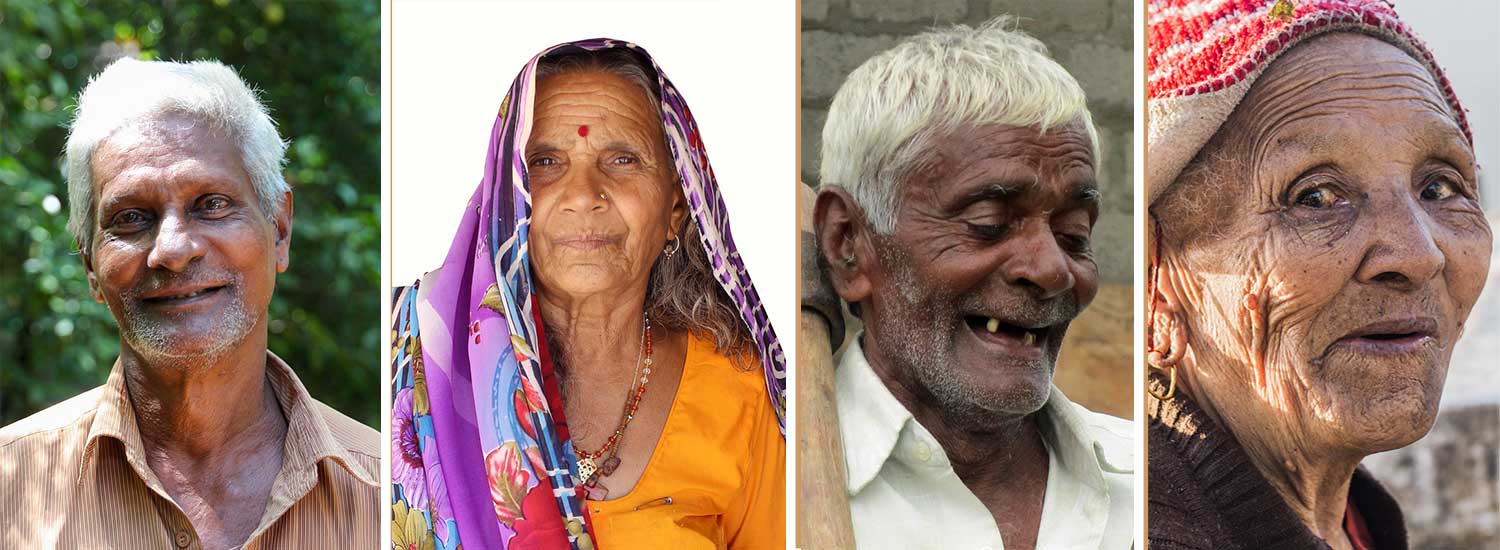SIGNS OF AGEING

WHAT IS AGEING?
Ageing is a slow phenomenon. Word AGE-ING depicts that Ageing is a continuous process. Since this a slow process, hence the signs also appear slowly. Signs appear when due to some cause or the other, functioning of one or more organs of the body is affected. Most of the scientists believe that Ageing starts after the age of 30 years but it is variable when the functioning of an organ would be affected.
Any organ in the body consists of large number of cells. Even if there is destruction of some of the cells, it may not affect the functioning of the organ because every organ has its own reserve of cells.
All organs are not affected at the same time and similarly the affection of the organs over the period of time are variable, thus the time of appearance of the signs which are specific to an organ are also variable.
DIAGNOSIS:
To diagnose the affection of an organ with specific signs may be easy and similarly its treatment but when multiple organs are affected, the signs are also multiplied. Some of the signs are common to one organ or the other, thus in an individual when multiple organs are involved there is a mixture of signs which makes it difficult for the physician to make out the diagnosis of a disease or other diseases.
ASSOCIATION’s VIEW:
This Association is of a opinion that when there is involvement of at least three organs in an individual, one is labeled as AGED, who may need special investigation to find out the causes of being aged and the MANAGEMENT.
Because of the involvement of different number of organs and the variability of the depth of the involvement of these organs, there are large numbers of signs which may be noticed and observed by the aged person or by the physician. Some of the signs are enumerated below.
AGEING changes in a person
BRAIN Changes
- Slow memory loss
- Fear and phobias
- Lack of confidence
- Lack of sleep
- Dementia
- Depression
FACIAL Changes
- First signs of aging appear around eyes as drooping of upper eyelids, thus making eyes appears smaller. The upper lip also begins to sink.
- Pale face (Anemia)
VISION-HEARING
- Reduced distant and near vision
- Reduced hearing
SKIN Changes
- Dull glow-less skin.
- Sagging skin.
- Dark spots over different parts of the body.
- Lines & wrinkles on the face and the body
Skin wrinkles because it becomes thinner and less elastic.
- Dry skin
- Itching skin
- It gets drier too as it makes less oil and sweat.
- Thinning of skin, which starts bleeding on itching particularly on the shin of the leg.
- Loosening of the skin
- Patchy skin.
- Open pores.
HAIR Changes
- Thinning of hairs
- Greying of hairs
- Falling of hairs
BODY Changes
- Slow weight loss
BODY IMMUNITY
- Increased susceptibility to infection
- Slow healing of the wounds
- Greater risk of heat stroke or hypothermia
KIDNEY Changes
- Frequency of urination
Difficulty in starting urination or maintaining urinary flow (in men)
- Sudden urgency to pass urine and difficulty in holding it (in men)
MUSCLE Changes
- Weakness of muscles
- Pain in the muscles on small exertions
- Reduction in the girth of muscles
- Decrease in the muscle power
GAIT Changes
- Wide gait
- Use of banister while using stairs
- Slow pacing
- Fear of falling on wet ground
- Breathlessness on slight exertion or ongoing upstairs
- Slight slow decrease in height. One can lose an inch height in about 30-40 years after the age of 30.
BONE Changes
- Backache
- Greying of hairs
- Falling of hairs
- Stooped posture
- Bones become more visible as you store less fat beneath your Inside skin.
- Bones become weak. Bones break on minor fall.
JOINTS Changes
- Joint changes, ranging from minor stiffness to severe arthritis
DENTAL Changes
- Clogging of food particles between the teeth
- Dental caries
- Loosening of teeth
BLOOD Changes
- Increase in blood pressure
- Pale face (Anemia)
HEART Changes
- Heart pain of Angina
- Myocardial infarction
BODY IMMUNITY
- Increased susceptibility to infection
- Slow healing of the wounds
- Greater risk of heat stroke or hypothermia
DIGESTION Chnages
- Indigestion
- Constipation
There can be many more signs of Ageing. With the mixture of signs related to different organs, thus ageing is a multidisciplinary disease and similarly the approach for the management of the aged should be multidisciplinary.
It may be possible that in spite of the care of aged by multiple specialists still their may not be any improvement. Under such circumstances other measures namely Indian System of Medicine, Antioxidant therapy, Hormonal Replacement, Stem Cell Therapy, Autoimmune Therapy, PRP Therapy, Telomere Therapy and many other modalities are in practice by different centers for Age Management which is perhaps the future.
Location
Indian Association of Age Management
c/o Naraina Medical Centre
NH-1, Community Centre, C-Block
Naraina Vihar, New Delhi 110028